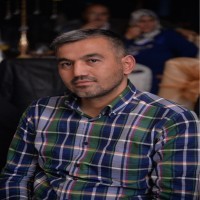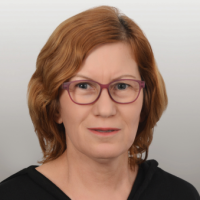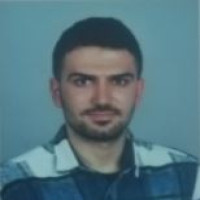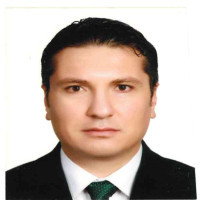Research Paper
Issue Reviewers





 0000-0003-0689-6824
0000-0003-0689-6824





 0000-0001-8385-9846
0000-0001-8385-9846
Aim & Scope
International Journal of Engineering Design and Technology (IJEDT) is a peer-reviewed journal published by the Faculty of Engineering and Architecture at Burdur Mehmet Akif Ersoy University. It publishes innovative research in the fields of engineering, design, technology, architecture, and planning. Our journal aims to merge academic and industrial advancements, sharing the outcomes of research activities at both national and international levels on a scientific platform.
To achieve this, we follow an extensive publication policy with a multidisciplinary approach that includes various engineering disciplines, architecture, and landscape architecture.
IJEDT accepts articles for original research, reviews, and technical notes in the following disciplines:
- Computer Engineering
- Environmental Engineering
- Electrical and Electronics Engineering
- Energy Systems Engineering
- Food Engineering
- Civil Engineering
- Mechanical Engineering
- Materials Engineering
- Architecture
- Forest Engineering
- Landscape Architecture
Author Guidelines
Manuscript Format: Manuscripts should be prepared on A4 size paper, leaving a margin of 2.5 cm from the top, bottom, right, and left. The text should be single-column, single-spaced, with a single line space between paragraphs.
Title and Authorship Information: The title of the paper should be in 14-point Arial, bold, lowercase, and centered. Leave a line space after the title. Author names should be in 10-point Arial, centered, followed by the authors' addresses, telephone and fax numbers, and the corresponding author's email address, in 10-point Arial, with the initial letters capitalized, and centered below. If the authors are from different institutions, superscript numerals should be used to indicate their affiliations.
Section Headings: Headings for sections (INTRODUCTION, METHODS, etc.) should be in 10-point Arial, bold, uppercase, followed by a line space before continuing with the text. Subheadings should have the initial letters capitalized, using 10-point Arial, bold. After the ABSTRACT, leave a line space before listing up to five keywords. The English title, followed by the ABSTRACT and Keywords, should be provided with a line space before moving to the main text.
Main Text: The main text should be in 10-point Arial font.
Structure: The manuscript should include the following sections: Title, Author Names and Affiliations, Contact Information, Corresponding Author's Email, Abstract, Keywords, Main Text (Introduction, Materials and Methods, Results and Discussion, Conclusion), Acknowledgments (if applicable), Abbreviations (if applicable), References.
Abstract: The abstract should not exceed 200 words and must contain the objectives, methods, and key findings of the study. It should be written in a single paragraph without citations.
Latin Nomenclature: Names of microorganisms and Latin terms should be italicized, and international conventions for abbreviations should be observed.
Tables and Figures: Titles for tables should be placed above the table, and titles for figures should be placed below the figure, both should be numbered. References to tables and figures in the text are required. Data presented in tables and figures should not be duplicated in the text. Titles of tables and figures should be descriptive and understandable. Figures and images should be in high-resolution.
Mathematical Equations: Mathematical equations should be numbered and referenced in the text.
In-text Citations: Citations in the text should follow the format (Author Surname, Year) for single and two authors, and Author Surname et al., Year for more than two authors. For Turkish sources, “ve” should be used to separate two authors' names. [(Burns, 2003), (Kılıç, 2008), (Anderson and Bjorn, 2003), (Anderson et al., 2003), (Yüksel et al., 2008)].
References: References should be listed alphabetically by the authors' surnames under the heading 'References'.
Reference Format: Follow the examples below for formatting references. Journal names should be italicized. For web references, official web pages should be cited where possible, including the date of access.
Article: Boki, K., Shinoda, S., Ohno, S. (1989). Effects of filtering through bleaching media on the decrease of peroxide value of autoxidized soybean fat. Journal of Food Science, 54: 1601-1603.
- Book: Hamilton, D., Dennis, S. (2004). Pesticide Residues in Food and Drinking Water. John Wiley & Sons Ltd, England.
- Book Chapter: Ozer, B.H. (1999). Microflora of white-brined cheeses. In: Encyclopaedia of Food Microbiology. Robinson, R.K., Batt, C.A., Patel, P.D. (eds.), Academic Press, London, UK, pp. 397-402.
- Conference Proceedings: Akdemir, O., Hepbaşlı, A., Kınık, Ö. (2004). Recent situation of energy consumption in Turkey dairy industry. In: International Dairy Symposium: Recent Developments in Dairy Science and Technology, May 24-28, 2004, Isparta, Turkey, Book of Proceedings, pp. 10-16.
Revisions: Manuscripts returned to authors for revisions should be resubmitted within three weeks with necessary modifications. Submissions not returned within this timeframe will be considered as new submissions.
Compliance: Manuscripts that do not adhere to the above guidelines will not be considered for review.
Ethical Considerations
Research Ethics: All submitted manuscripts should adhere to the highest ethical standards of research. Studies involving human participants, animals, or potentially sensitive data must have received appropriate ethical approval and must be conducted in accordance with international ethical standards.
Conflict of Interest: Authors must disclose any financial or other substantive conflicts of interest that might be construed to influence the results or interpretation of their manuscript. All sources of financial support for the project should be disclosed.
Authorship Criteria: Authorship should be limited to those who have made a significant contribution to the conception, design, execution, or interpretation of the reported study. All those who have made substantial contributions should be listed as co-authors.
Data Availability: Authors are encouraged to make the data supporting their findings publicly available, either by depositing in publicly available repositories or by providing the data within the manuscript or as supplementary information.
Plagiarism and Originality: Manuscripts must be the original work of the author(s) and have not been published elsewhere in any form or language (partially or in full), unless the new work concerns an expansion of previous work. (Please provide transparency on the re-use of material to avoid the hint of text-recycling (“self-plagiarism”)). The journal uses plagiarism detection software to screen submitted content for originality.
Peer Review Process: All submissions are subject to peer review by at least two independent experts in the field. The review process is double-blind; both reviewers and authors are kept anonymous.
Appeals and Complaints: Authors have the right to appeal editorial decisions. A detailed explanation of the appeals process and contact information for complaints will be provided on the journal's website.
Formatting and Submission
Submission Platform: Manuscripts should be submitted electronically through the journal's online submission platform. Instructions for submission, including how to register and make a submission, are detailed on the journal's website.
Language: Submissions must be in English. Non-native English speakers are strongly encouraged to have their manuscript professionally edited before submission to improve readability and grammar.
Graphics and Supplementary Materials: High-quality graphics (in TIFF, JPEG, or PDF format) and supplementary materials can be submitted. These should enhance the manuscript and not repeat data already presented.
Ethical Principles and Publication Policy
Price Policy
No fee is charged from the author or institution under any name.

